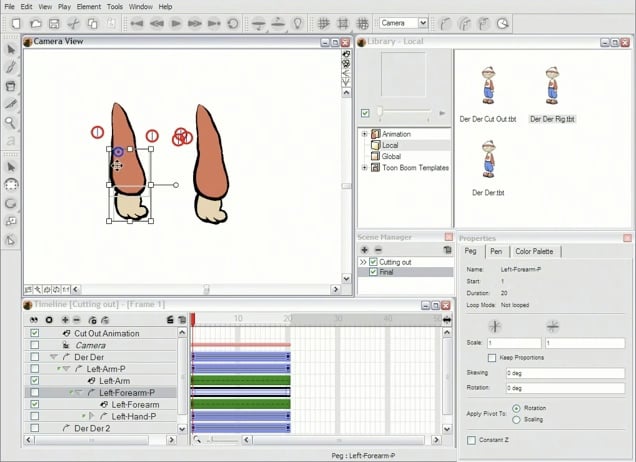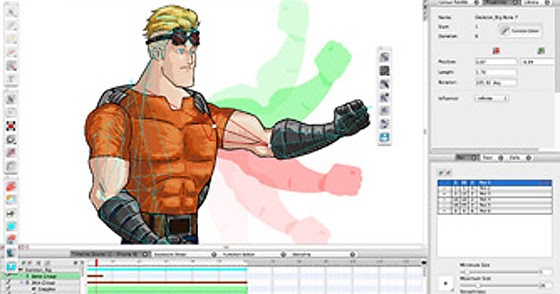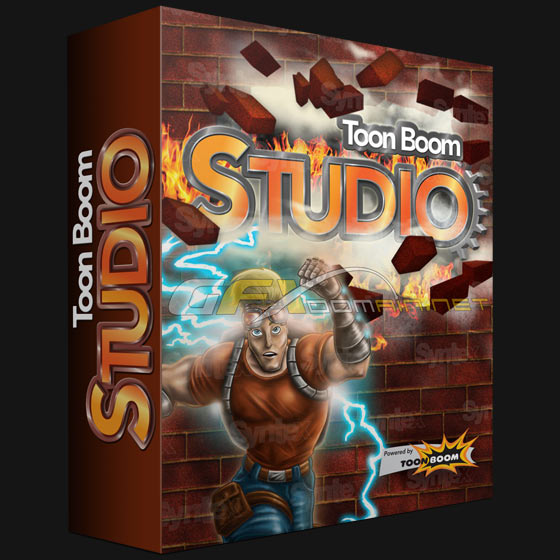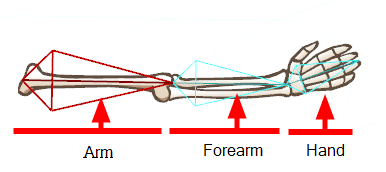
Selecting design options based on the character's expected performance requirements. Our goal is to produce the illusion of movement and we will do that sometimes using articulated joints to produce changes between images and other times we will change the drawing itself for certain body parts.Ī sequential approach to working with cut-out characters might be:Ģ. In fact, if you are familiar with stop motion animation techniques, you will realize that we are going to really end up designing our characters to be a jointed articulated puppet and we will also want to use replacement pieces for different character parts as well. Depending on the character style we may need to use a combination of both techniques. Certainly there are styles of characters that lend themselves to more puppet-like construction and other styles of characters that really don't. Where possible we will look at creating posable and animatible digital puppets, but at the same time we will also talk about replacement animation and the planning and reuse of drawing assets.
#Toon boom studio 8 bone series#
Cut-out animating is not less skilled animation, it just uses different skills and places different emphasis on the animator’s skill sets.įor our purposes in this series we are primarily focused on “cut-out” characters to implement a form of “limited” animation. Successful cut-out animation is a highly skilled approach to animation production. So don’t assume just because you are substituting a cut-out character for a fully drawn character that it is easier to implement.
#Toon boom studio 8 bone software#
And even though it requires less drawing skills it requires even more skills in the areas of planning, construction and software usage. It may not require as many drawing skills but it requires significant animating skills just the same. But again there is a common misconception that it requires less animating skills than fully drawn animation. “Cut-out” animation in Toon Boom Studio is based on the “limited” animation approach and can be used to produce animation with even less drawing needed than classical “limited” animation. So the “limited” part has to do with drawing efficiency. It requires every bit as much animating knowledge and skill to do classical “limited” animation, but it can reduce the amount of labor required to produce the final animation by reducing the amount of drawing needed.

A common misconception is that the “limited” approach is a less skilled approach to animating then using the “full” approach. The classical “limited” animation approach is to separate the character into layers and only redraw those layered parts that change in a frame while "holding" the unchanged layers.
#Toon boom studio 8 bone full#
The “full” animation approach is to redraw the full character in its entirety for each frame that changes as we create the illusion of movement. There is the “full” animation approach and the “limited” animation approach. There are two fundamental approaches to producing hand drawn cartoon animation. In creating a hand drawn cartoon character we must consider how we will be animating that character. Thus with the "cut-out" character we will combine articulation of jointed body parts with the replacement of body parts to create the illusion of movement. Additionally a "cut-out" character will consist of replacement parts that can be swapped. A “cut-out” character is a character that has a multi-element hierarchy to create movable joints.

I plan to balance basic conceptual understanding of the subject with step by step “how to” guidance.įirst, I want to clearly define what I mean by a “cut-out” character.


I’m going to try my best to be as in-depth as practical, so be patient, as my goal is to provide a definitive series on “cut-outs”. This is the first in a series of tutorials about creating and animating “cut-out” characters.


 0 kommentar(er)
0 kommentar(er)
